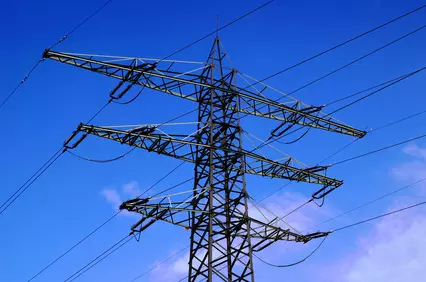Contact of Humans or Animals with Electric Current:
When humans or animals come into contact with electric current, various injuries or damages can occur. It is important to take appropriate safety measures to minimize these risks.
- Burns (ranging from electric marks to charring)
- Muscle cramps
- Loss of consciousness
- Ventricular fibrillation or cardiac arrest
- Respiratory paralysis
- Electric shock and death
- Secondary injuries (e.g., falling from a ladder)

The harmful effects of electric current depend on several factors:
Current intensity passing through the body
Current pathway through the body
Duration of current exposure
Type and frequency of the current
Physical condition of the affected person
Most electrical accidents occur due to inattention and human error. To avoid or reduce the risk, special care is required when working with electrical installations.
Electric current can have various effects on the body:
Both positive and negative. Here are some key points regarding the effects of electric current on the body:
- Electric shock. When the body experiences an electric current, it can result in an electric shock. The severity of the shock depends on the current intensity, voltage, duration, and pathway of the current through the body. An electric shock can lead to injuries, burns, or even death, depending on the strength of the current.
- Muscle reaction. Electric current can stimulate or affect muscles. Strong currents can cause muscle contractions, leading to the person involuntarily gripping objects in dangerous situations. This can result in bone fractures or other injuries, especially if the contraction impairs control over the body's muscles.
- Cardiac arrhythmias. Electric current can disrupt the normal heart rhythm. A strong external electrical signal can interfere with the heart's normal excitation and lead to cardiac arrhythmias such as rapid heartbeats (tachycardia), cardiac arrest, or ventricular fibrillation. This can be life-threatening and requires immediate medical assistance.
- Tissue damage. High current intensity can cause tissue damage, particularly at the points where the current enters and exits the body. This can lead to burns, tissue necrosis (tissue death), or other injuries.
- Long-term effects. Repeated exposure to electric current can have long-term effects on the body. Chronic exposure can lead to neurological problems, memory loss, sleep disturbances, or other health issues. Long-term effects depend on factors such as the intensity and duration of exposure.
It is important to note that the effects of electric current on the body depend on various factors, including current intensity, voltage, duration of exposure, pathway of the current through the body, individual health conditions, and other circumstances. In case of an electric accident, seeking immediate medical help is always advisable.
Foreign currents can affect the function of organs:
Especially when they flow through the heart. Here is additional information regarding the points you mentioned:
- Muscle spasms. When a current flows through the body, the muscles can spasm, leading to a phenomenon known as "current contraction." This contraction can prevent the person from voluntarily releasing the contact. It is important to note that in such situations, the body is often affected by reflexive muscle contractions and may not be able to retain control over the action.
- Cardiac arrhythmias. With alternating current, the heart can respond to rapid and strong impulses from the outside and try to follow them. This can result in irregularities in the heart rhythm, known as arrhythmia. If the current flow occurs during the vulnerable phase of the heart cycle, it can lead to life-threatening conditions such as ventricular fibrillation. Ventricular fibrillation is a chaotic and ineffective heartbeat that can lead to cardiac arrest.
- Protective measures. To protect against the effects of dangerous current flows on the heart, safety precautions such as residual-current devices (RCDs) are used. An RCD detects current flow between a person's (or an animal's) body and the ground and quickly shuts off at a certain fault current value. This reduces the risk of cardiac arrhythmias such as ventricular fibrillation.
- Low body currents. In electrical accidents involving low-voltage systems, where the current intensity typically ranges from a few milliamperes to several tenths of an ampere, the risk of severe cardiac arrhythmias is lower. However, even low body currents can lead to injuries and other health problems.
It is crucial to emphasize that despite the lower risk associated with low body currents, protective measures like RCDs are still essential to minimize the risk of electrical accidents and their potentially severe consequences. Precautions and proper installations are vital to ensure safety when dealing with electric current.
The body's resistance plays a crucial role in the effects of an electric shock:
Here is more information on this topic:
- Body resistance. Body resistance is a combination of the intrinsic resistance of body tissues and the transition resistances at the points where the current enters and exits the body. Body resistance varies depending on individual factors such as skin moisture, contact area, skin texture, and other circumstances.
- Effects of voltage. The current flowing through the body depends on the applied voltage and the body's resistance. According to Ohm's law (I = U/R), a higher resistance value can mean lower current flow through the body for a given voltage, while a lower resistance can lead to higher current flow.
- Influence of contact area. The contact area between the body and the energized part affects the transition resistance. A larger contact area can reduce the transition resistance, while a smaller area can increase resistance.
- Influence of moisture. Moisture, whether from sweat or other factors like wet environments, reduces transition resistance. When the body is moist, the current can flow more easily through the body due to lower resistance. This increases the risk of electric shock injuries.
It is important to note that the effects of an electric shock depend not only on the current intensity but also on the duration of current flow, the pathway of the current through the body, and other individual factors. High current intensity, especially when flowing through the heart, can cause severe injuries or even death. Therefore, it is of utmost importance to take safety measures and avoid electrical risks to prevent accidents.
AC voltages above 50 V are life-threatening.
DC voltages above 120 V are life-threatening.
AC with a frequency of 50 Hz is more dangerous than DC because ventricular fibrillation can occur at this frequency.
Due to this high risk of accidents, working on live parts of installations is generally prohibited!
For operating voltages above 50 V AC or 120 V DC, working on live parts is only permitted if these parts cannot be shut down for essential reasons. However, such work should only be carried out by qualified electricians with additional training and not by apprentice trainees.
Electric current accidents are classified into direct contact and indirect contact.
Here is more information on these terms:
Direct contact:
In direct contact, the human body comes into direct contact with parts that are energized during normal operation, such as an active conductor. To prevent direct contact, live parts are usually equipped with insulations or covers to prevent contact with them. This reduces the risk of electric accidents through direct contact.
Indirect contact:
Indirect contact occurs when voltage reaches parts that are not usually energized due to insulation failure. This means that an insulation fault has occurred, and a conducting connection, also known as a body contact, exists between the live parts and another conductive part, such as the enclosure of an electrical machine. Indirect contact can be dangerous as current flow can occur through the body even if there is no direct contact with live parts. It is essential to avoid such insulation failures and perform regular inspections and maintenance to minimize the risk of indirect contact.
Distinguishing between direct and indirect contact is important to take appropriate protective measures and ensure safety in electrical installations and devices. Insulation measures, protective grounding connections, and other safety devices are used to reduce the risk of electric accidents due to contact.
Elektrosicherheit: Richtlinien und Vorsichtsmaßnahmen für einfache elektrotechnische Arbeiten
Die Sicherheit hat oberste Priorität.

- Alle hier bereitgestellten Anleitungen und Informationen dienen rein informativen Zwecken und sollen ausschließlich zur Informationsbeschaffung und Weiterbildung verwendet werden. Sie sollten nicht als Ersatz für professionelle Beratung angesehen werden. Bei Zweifeln empfiehlt es sich, einen qualifizierten Elektriker hinzuzuziehen, um fachkundige Unterstützung zu erhalten.
- Es ist wichtig, die örtlichen Vorschriften und Bestimmungen bei elektrischen Arbeiten zu beachten. Arbeiten mit Strom sollten nur von qualifizierten Fachleuten durchgeführt werden, da sie lebensgefährlich sein können.
- Fehler in Anleitungen und Schaltbildern sind möglich. Der Anbieter übernimmt keine Gewähr oder Haftung für Schäden oder Verletzungen, die aus der Umsetzung der bereitgestellten Informationen resultieren könnten. Es liegt in Ihrer Verantwortung, die Richtigkeit der Informationen zu überprüfen und die erforderlichen Sicherheitsvorkehrungen zu treffen.
- Die Verwendung geeigneter persönlicher Schutzausrüstung (PSA) ist entscheidend, um die Sicherheit bei elektrotechnischen Arbeiten zu gewährleisten. PSA schützt vor Stromschlägen, Augenverletzungen, thermischen und mechanischen Gefahren. Es ist jedoch wichtig zu beachten, dass PSA allein nicht ausreicht und durch Fachwissen, Fähigkeiten und die Einhaltung von Sicherheitsvorschriften ergänzt werden muss.
- Arbeiten an Teilen, die unter Spannung stehen, sind strengstens untersagt. Vor Beginn der Arbeiten müssen geeignete Sicherheitsvorkehrungen getroffen werden, einschließlich des Freischaltens der Anlage.
- Bei Schäden durch mangelhafte Elektroinstallation haftet der Errichter der Anlage gemäß den geltenden gesetzlichen Bestimmungen.
- Diese Zusammenfassung von Richtlinien und Vorsichtsmaßnahmen ist nicht umfassend. Bei Unsicherheiten ist es ratsam, einen qualifizierten Elektriker zu konsultieren oder sich an örtliche Vorschriften und Bestimmungen zu halten, um maximale Sicherheit zu gewährleisten.
- Die ordnungsgemäße Installation und Wartung von elektrischen Anlagen und Geräten ist von großer Bedeutung, um mögliche Gefahren zu minimieren und ein sicheres Umfeld zu schaffen.